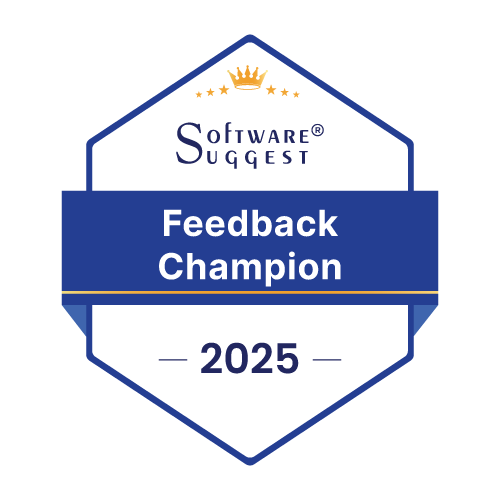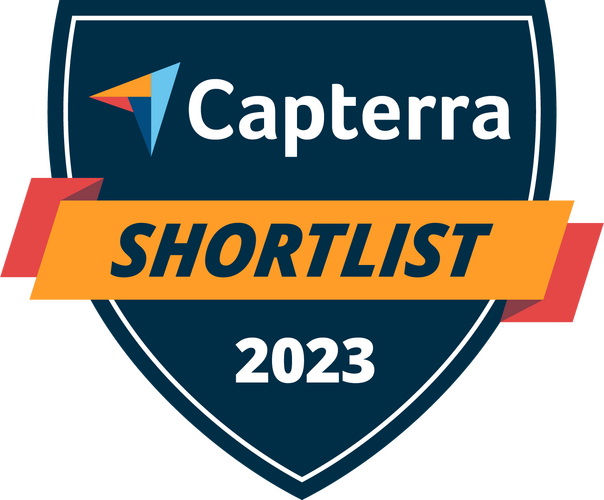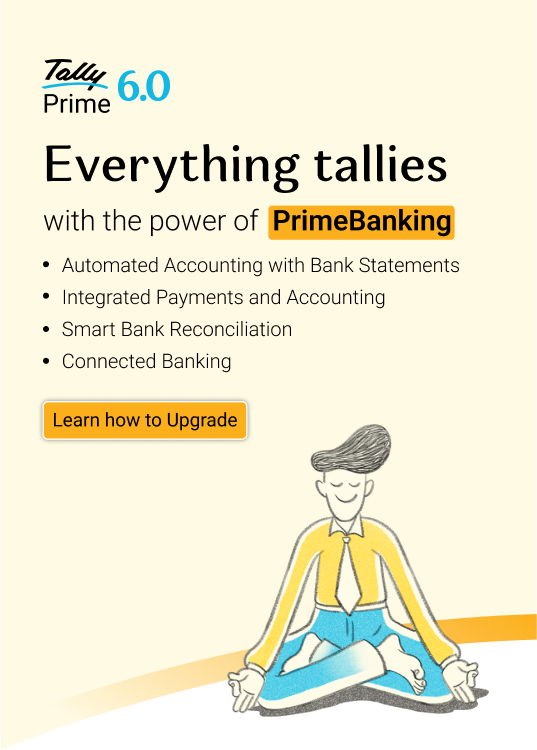Are you secretly wondering if a robot will be doing your job in five years? It is a thought that crosses many minds, often pictured like a scene from a sci-fi movie. However, what if we looked at it differently? Instead of a replacement, imagine an assistant that never sleeps, handles the boring stuff, and helps you focus on what you do best.
The future is not about man or machine. It is about a man with a machine. Think of AI as the ultimate sous chef in your business kitchen. It can chop the vegetables and manage the inventory at lightning speed, freeing you, the master chef, to create the award-winning recipes. Let’s explore how this dream team is already changing the game and how you can get in on the action.
The historical context: From automation to collaboration
Every time a groundbreaking technology has appeared, it has been met with a mix of excitement and fear. During the Industrial Revolution, people worried that machines would make human labour obsolete. When computers arrived, many feared they would replace office workers. Yet, history teaches us a valuable lesson: humans have always evolved by augmenting their capabilities with tools, from the first wheel to the latest software.
What is human-AI collaboration?
Simply using a smart tool does not equal human-AI collaboration. It is an alliance in which a person and AI work together to accomplish a task that neither could achieve alone without joining forces. The AI does data processing, pattern recognition, and automation tasks. Humans offer higher-level thinking, creativity, emotional intelligence, and ethical decision-making. This is combining the productivity power of machines with the judgment of humans, which is a natural match.
H2: Why collaboration, not competition, wins?
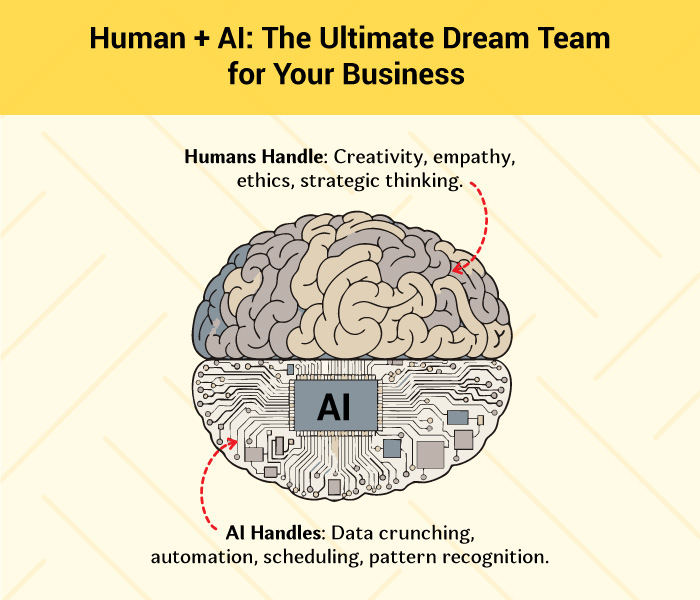
Trying to compete with AI on tasks like data analysis or repetitive calculations is a losing battle. A machine will always be faster. The real victory lies in collaboration. When you let AI manage the tedious work, you free up your most valuable resource: your brainpower. This enables you to focus on managing client relationships, innovating new products, and making strategic decisions that require a human touch.
7 practical ways to collaborate with AI in business & daily life
So, how does this partnership look in the real world? Here are seven practical examples of how you can team up with AI today.
|
Scenario |
What AI Does |
What You Do |
Example Tool/Tip |
|
Handling emails & scheduling |
Auto-sorts emails, summarises long threads, and schedules meetings based on your availability. |
Check for errors, approve final meeting times, and add personal context to important replies. |
Gmail/Outlook smart suggestions, Calendly, Reclaim.ai |
|
Customer service |
Replies to frequently asked questions, sorts support tickets, and routes calls to the right department. |
Handle complex or sensitive customer queries that require empathy and advanced problem-solving. |
ChatGPT, Zendesk AI, Drift, Intercom |
|
Social media marketing |
Suggests content ideas, schedules posts for optimal times, and analyses campaign performance data. |
Choose the final campaign tone, review the creative elements, and set the overall marketing strategy. |
Buffer, Hootsuite, Jasper AI |
|
Inventory & finance management |
Tracks sales in real time, predicts future demand trends, and flags financial anomalies. |
Make final purchasing decisions, interpret financial reports, and plan for business growth. |
QuickBooks with AI, Xero, Fyle |
|
Data analysis |
Scans massive datasets to find patterns, creates visual charts, and summarises key findings in reports. |
Set the goals for the analysis, interpret the visual data, and decide on the next steps. |
Excel (Analyse Data), Google Sheets AI, Notion AI |
|
Recruiting & talent management |
Screens thousands of CVs for relevant keywords and assigns scores based on initial qualifications. |
Conduct final interviews, assess cultural fit, and make the ultimate hiring decisions. |
SeekOut AI, LinkedIn Recruiter |
|
Everyday life (Home & planning) |
Suggests recipes based on ingredients you have and coordinates family calendars to find free slots. |
Confirm the final plans with family members and add personal context that the AI may not know. |
Google Assistant, Alexa, and Todoist AI |
Best practices for smooth human-AI collaboration
To build a successful partnership, keep these simple principles in mind:
Start small: Do not try to automate everything at once. Pick one routine task, like sorting your emails, and observe the results before expanding.
Stay involved: Think of yourself as the pilot and AI as the autopilot. Always review the AI’s output to ensure quality and context.
Focus on strengths: Let AI do the heavy lifting with numbers and data. Use your time for creativity, strategic thinking, and building relationships, which are uniquely human skills.
Keep learning: The world of AI is constantly evolving. Stay updated on new tools and features, and give feedback to help them improve.
Preserve the human touch: Use AI to enhance your work, not erase your value. A personalised thank-you note or an innovative idea cannot be automated.
Real-world example of human-AI teams
Since mid-2024, Goldman Sachs has deployed its in-house AI assistant to support 10,000 employees across departments. The tool helps staff draft client pitches, debug code, generate creative ideas, and handle real-time translation, reducing time spent on routine tasks.
By automating these repetitive processes, the AI enables teams to focus on critical thinking, client strategy, and innovation. The result is not just faster workflows but also a more empowered workforce that can deliver higher-value contributions across the organisation.
How to build effective human-AI partnerships
Introducing a new set of skills and careful thought into workflow design is key to building a great partnership. Digital literacy, critical thinking, and creative problem-solving are top skills for this new era.
One of the most important things while designing workflows is defining the roles for humans vs AI. Many of those frameworks are designed to assist organisations in articulating and evaluating how an AI system ought to be employed, its intended use, and the circumstances of its use. By defining the AI system lifecycle (everything from design to deployment) in such a structured manner, the end-to-end process runs smoothly with everyone knowing their roles, creating seamless synergies.
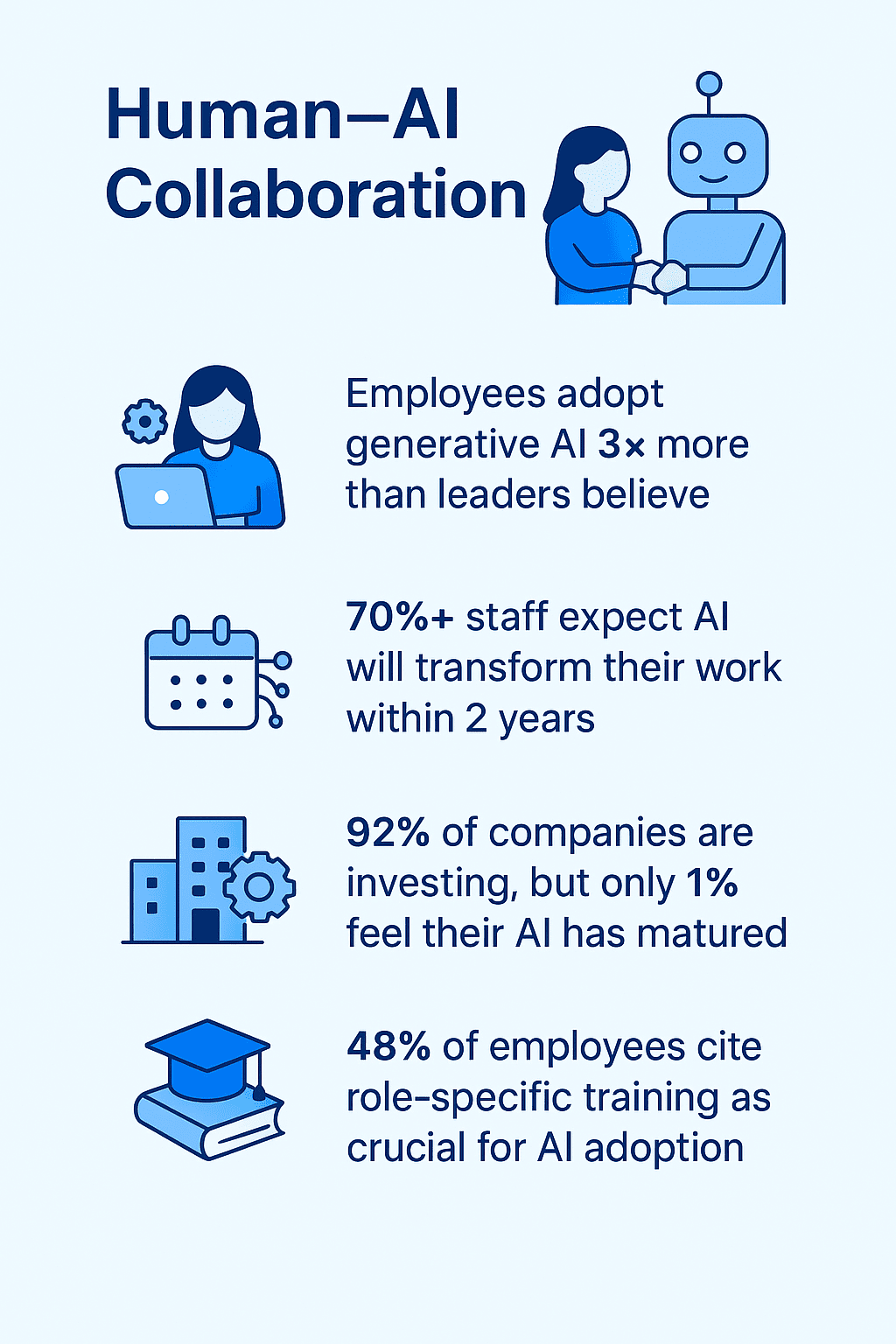
Challenges and ethical considerations
As always, such collaboration comes with its own challenges. Topics such as AI algorithmic bias, an increasing demand for transparency in the decision-making process, and interpretability (the capability of explaining the reasoning of an AI) are crucial. This is why human oversight and strong governance are non-negotiable. It is our responsibility to ensure that these powerful tools are used ethically and that a human is always in a position to intervene and make the final call.
Let’s wrap up!
The rise of AI is not a signal to step back; it is an invitation to step up and work smarter. This powerful technology is here to augment our abilities and free us to do the work that truly matters.
How could AI amplify your strengths at work or in life? Challenge yourself to test an AI tool this week!



